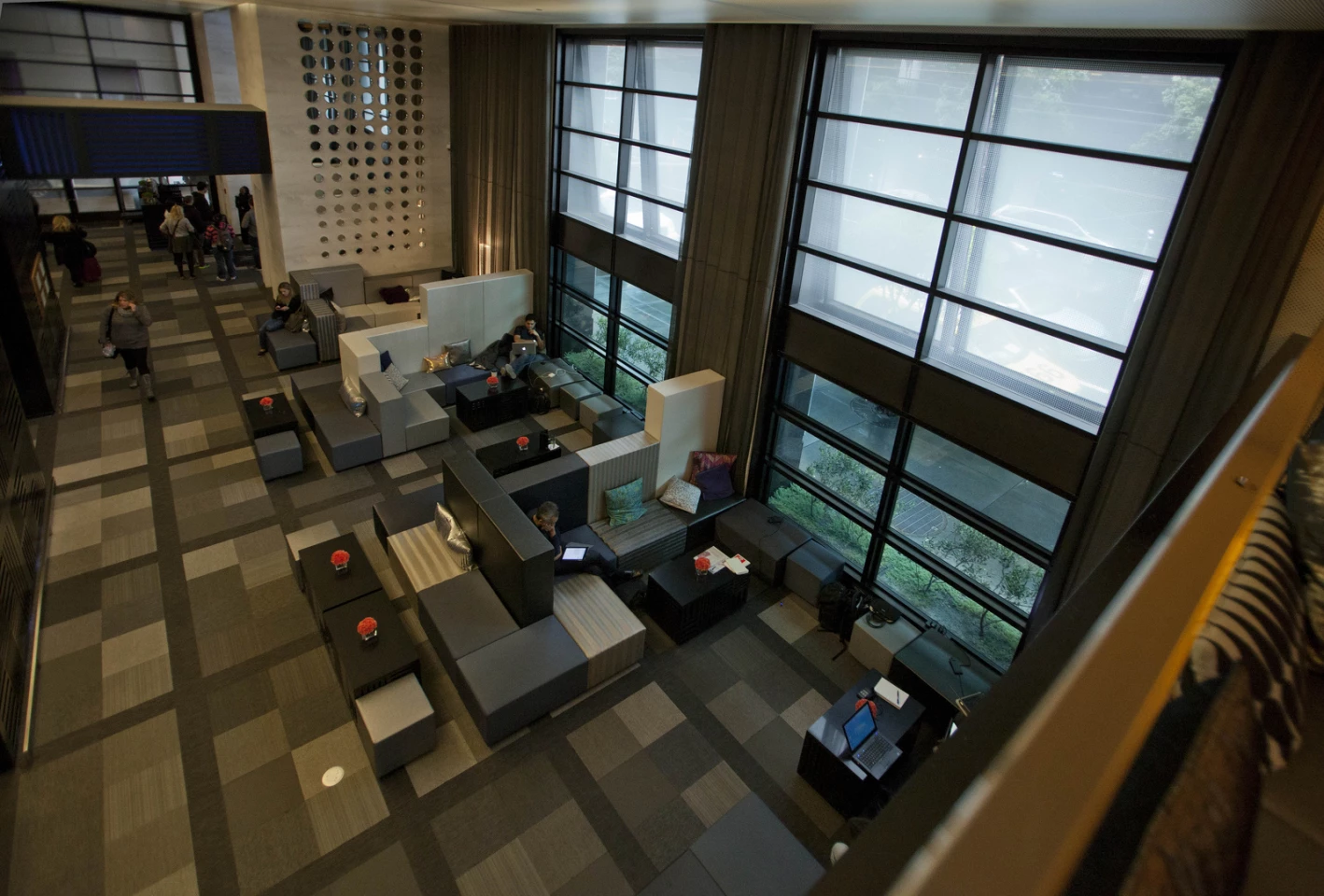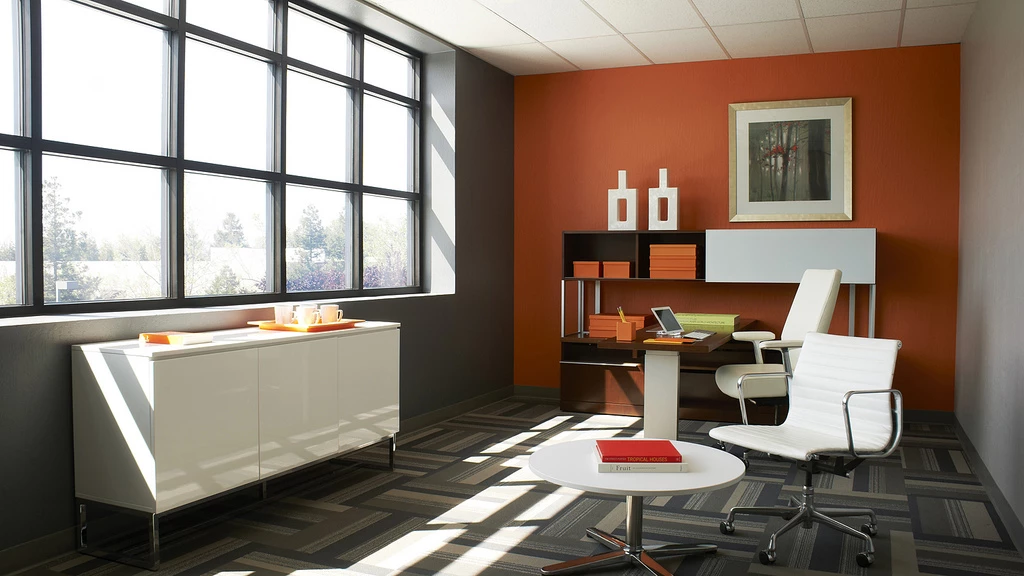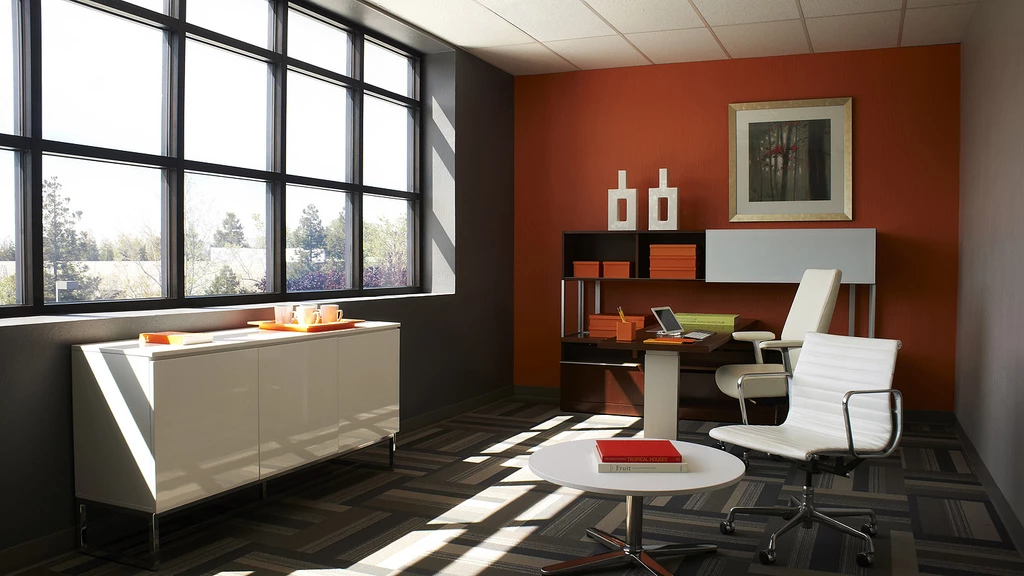The lounges and lobbies of San Francisco's W Hotel have taken a turn for the futuristic, incorporating variable tint "dynamic glass" courtesy of California-based start-up View. View Dynamic Glass, as the company calls its particular brand, alters in tint to reduce the amount of heat and light passing through. Tint can be changed on demand (with an iPhone app, if you like, GigaOM reports); or the process can be automated – allowing View to dub its technology an "intelligent glass system."
View Dynamic Glass exploits electrochromism, a property which causes the color of a material to change, when an electric charge is momentarily applied. Details of View's specific technology are scarce, though MIT Technology Review reported in August that the "glass" is a seven-layer sandwich with three delicious fillings: ion-storage and electrochromic layers with an electrolyte in between. These are encased between two conducting oxide films, which are themselves entombed between, believe it or not, panes of ordinary glazing.
When applying a relatively meager current to the oxide layers, ions are apt to hightail it across the electrolye to the electrochromic layer, where the resulting collisions cause a change in its optical properties, increasing its light absorption and darkening its hue. Reversing the current reverses the process.
"We did a case study in five cities, and the average savings in commercial buildings are about 25 percent of the heating, ventilation, and air-conditioning energy use annually," View CEO told MIT Technology Review, back when the company was still known as Soladigm.

By reducing the direct sunlight penetrating the space, solar heat gain is reduced, and so is the need for energy-intensive artificial cooling. The reduction in sunlight may actually increase the need for electric lighting, but that's a desirable trade-off since lighting is less demanding than heating and cooling from an energy point of view.
GigaOM reports that the windows are likely to cost twice the price of a "standard system" in the residential market, and 50 percent more in the commercial sector. Specific payback times will vary on a case by case basis, but View points out that the technology is best suited to buildings with high exposure to sunlight.
The good old-fashioned window blind (or the external equivalent, solar shading) are likely to remain more cost-effective answers to the problem of solar gain for some time, but a clear advantage of dynamic glass is that the view out is not compromised. Even tinted, you can still see through the window unimpeded.
The installation marks a transition for View, out of a six-year R&D period and into the commercial world. View is by no means the only company operating in the market, though, so expect windows to be one of the battlegrounds as buildings evolve from passive lumps of dead matter into dynamic and intelligent machines.
View Dynamic Glass will also be on show at GreeBuildExpo at San Francisco's Moscone Center from today until November 16.
Sources: View (PDF), MIT Technology Review, GigaOM










